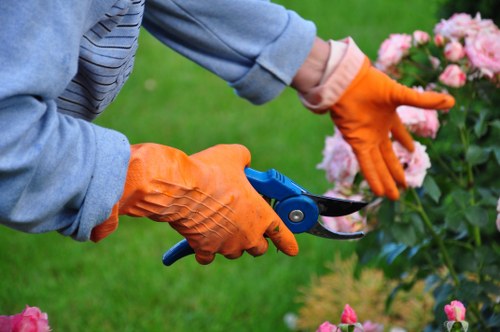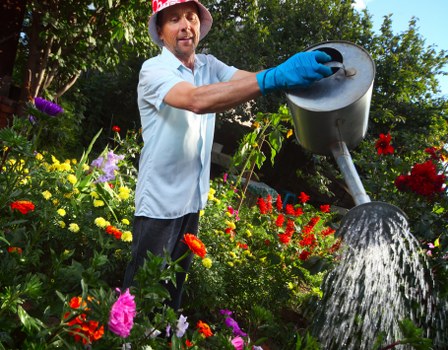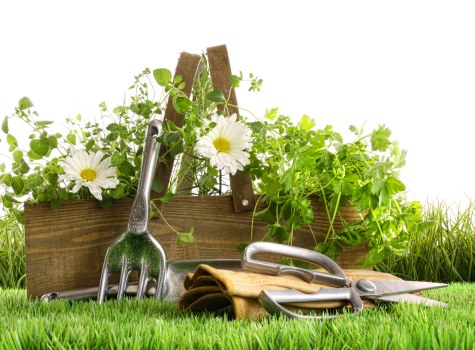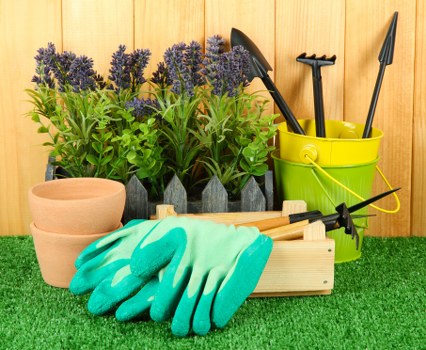Garden Fence Replacement in Mowing Sucks

Maintaining a beautiful garden involves numerous tasks, and one of the most critical yet often overlooked aspects is the condition of your garden fence. A sturdy and aesthetically pleasing fence not only defines the boundaries of your garden but also provides security and enhances the overall appeal of your outdoor space. However, when it's time for garden fence replacement, many homeowners find the process particularly frustrating, especially amidst their regular mowing and gardening routines.
The phrase "Garden Fence Replacement in Mowing Sucks" might resonate with those who have experienced the hassle of replacing a fence while trying to keep their lawn pristine. Balancing the time-consuming task of fence replacement with the ongoing maintenance of a well-mowed garden can be challenging. This article delves into the reasons why garden fence replacement can be a hassle during mowing and offers practical solutions to make the process smoother and less stressful.
Understanding the specific challenges of replacing a garden fence during mowing season is the first step toward mitigating the inconvenience. Factors such as weather conditions, time constraints, and the physical demands of the task contribute to the overall difficulty. Additionally, the disruption to the aesthetic harmony of your garden can be disheartening, especially if you take pride in your lush, well-kept lawn.

Why Garden Fence Replacement Feels Daunting
Replacing a garden fence is a significant undertaking that involves careful planning, resource allocation, and physical labor. When combined with the regular maintenance tasks like mowing, the process can quickly become overwhelming. Here are some key reasons why garden fence replacement during mowing season feels particularly daunting:
- Time Management: Coordinating fence replacement activities around your mowing schedule can disrupt your routine and leave you feeling pressed for time.
- Physical Labor: The physical demands of removing old fence panels and installing new ones can be exhausting, especially after a long day of gardening.
- Weather Dependencies: Unpredictable weather can delay fence replacement tasks, forcing you to juggle multiple projects without a clear timeline.
- Aesthetic Disruption: An incomplete or poorly installed fence can detract from the beauty of your garden, making the maintenance efforts feel futile.

Planning Your Garden Fence Replacement
Effective planning can significantly reduce the stress associated with garden fence replacement during mowing season. By organizing your tasks and setting realistic timelines, you can ensure that both your fence and garden receive the attention they need without overwhelming yourself.
Assessing the Current Fence
Before undertaking the replacement, it's crucial to evaluate the condition of your existing fence. Look for signs of wear and tear, such as rotting wood, rusted nails, or broken panels. Understanding the extent of the damage will help you determine whether repair or replacement is the best course of action.
Choosing the Right Materials
Selecting appropriate materials for your new fence is essential for longevity and aesthetic appeal. Consider options like wood, vinyl, metal, or composite materials, each offering different benefits and maintenance requirements. Your choice should align with the overall style of your garden and your budget.

Integrating Fence Replacement with Garden Maintenance
Integrating your fence replacement project with your regular garden maintenance can streamline the process and minimize disruptions. Here are some strategies to achieve a harmonious balance:
- Schedule Wisely: Plan fence replacement tasks for times when mowing is less frequent or can be temporarily paused.
- Delegate Tasks: If possible, enlist the help of family members or hire professionals to share the workload.
- Invest in Efficient Tools: Utilizing the right tools can speed up the fence replacement process, allowing you to spend less time away from your garden.
- Maintain Temporary Boundaries: Use temporary fencing or barriers to protect areas already mowed while working on replacing sections of the fence.
By thoughtfully integrating fence replacement with your garden maintenance routines, you can ensure a smoother workflow and a more appealing outdoor space.

Hiring Professionals vs. DIY Fence Replacement
One of the deciding factors in managing garden fence replacement is whether to undertake the project yourself or hire professionals. Both options have their pros and cons, especially when considering the ongoing demands of mowing and garden upkeep.
DIY Fence Replacement
Opting for a DIY approach can be cost-effective and satisfying. However, it requires significant time, physical effort, and some level of expertise. Balancing this with regular mowing can lead to exhaustion and subpar results if not carefully managed.
Hiring Professional Fence Installers
Hiring professionals can alleviate much of the stress associated with fence replacement. Experts can complete the job more efficiently and with higher quality, allowing you to focus on maintaining your garden without additional strain. While this option involves upfront costs, the long-term benefits and peace of mind often justify the investment.

Tips for a Smooth Fence Replacement Process
To make your garden fence replacement as seamless as possible, consider the following tips:
- Plan Ahead: Map out your replacement schedule in advance, coordinating with your mowing and gardening tasks.
- Prepare Your Tools: Ensure you have all necessary tools and materials before starting the project to avoid unnecessary delays.
- Protect Your Garden: Use tarps or temporary barriers to protect your mowed areas and plants from debris and construction activities.
- Stay Flexible: Be prepared to adjust your plans in response to unforeseen challenges, such as weather changes or supply shortages.
Implementing these strategies can help you navigate the complexities of fence replacement while maintaining your garden's pristine condition.

Choosing the Right Fence Design
The design of your new fence plays a crucial role in both functionality and aesthetics. Selecting a design that complements your garden while meeting your privacy and security needs is essential.
Aesthetic Considerations
Select a fence style that enhances the visual appeal of your garden. Whether you prefer the classic charm of wooden pickets, the sleek look of metal panels, or the low-maintenance benefits of vinyl, your choice should reflect your personal taste and the overall theme of your outdoor space.
Functional Requirements
Consider the primary purpose of your fence. If privacy is a major concern, opt for taller panels or materials that prevent visibility. For security, sturdy materials like wrought iron or solid wood may be more appropriate. Balancing aesthetics with functionality ensures that your fence serves its intended purpose without compromising the beauty of your garden.

Maintaining Your New Garden Fence
Once your new garden fence is installed, proper maintenance is key to ensuring its longevity and appearance. Regular upkeep not only preserves the integrity of the fence but also maintains the overall aesthetics of your garden.
- Regular Cleaning: Remove dirt, debris, and mold from your fence surfaces to prevent deterioration.
- Inspect for Damage: Periodically check for signs of wear, such as loose boards or rusted metal, and address issues promptly.
- Protect Against the Elements: Apply sealants or paints to shield your fence from moisture, UV rays, and other environmental factors.
- Vegetation Control: Keep plants and shrubs trimmed away from your fence to prevent damage and maintain its structural integrity.
Consistent maintenance efforts will ensure that your garden fence remains a beautiful and functional part of your outdoor space for years to come.

Common Mistakes to Avoid
Avoiding common pitfalls can make your garden fence replacement a more pleasant experience. Here are some mistakes to steer clear of:
- Neglecting Planning: Failing to plan can lead to delays, increased costs, and subpar results.
- Choosing Inappropriate Materials: Selecting materials that don't suit your climate or garden style can lead to premature wear and aesthetic mismatches.
- Poor Installation: Improper installation can compromise the fence's stability and appearance.
- Overlooking Local Regulations: Ignoring zoning laws or homeowner association guidelines can lead to legal issues and necessitate costly modifications.
By being mindful of these common mistakes, you can ensure a successful garden fence replacement project.

Cost Considerations for Fence Replacement
Budgeting for garden fence replacement is an important aspect of the planning process. Understanding the factors that influence costs can help you make informed decisions and avoid unexpected expenses.
Material Costs
The type of material you choose significantly impacts the overall cost of your fence replacement. While wood is often more affordable, materials like vinyl, metal, or composite can offer greater durability and lower maintenance, potentially saving money in the long run.
Labor Expenses
If you decide to hire professionals, labor costs will be a major component of your budget. Getting multiple quotes and understanding what each service includes can help you find the best value for your investment.
Additionally, factors such as fence height, length, and the complexity of the design will affect both material and labor costs. Planning your budget with these considerations in mind ensures that your garden fence replacement project stays financially manageable.

Environmental Impact of Fence Materials
Considering the environmental impact of your fence materials is increasingly important for eco-conscious homeowners. Sustainable choices can reduce your garden's carbon footprint and contribute to a healthier ecosystem.
- Recycled Materials: Opt for fences made from recycled metals or composite materials to minimize waste and promote sustainability.
- Renewable Resources: Wood sourced from sustainably managed forests is an environmentally friendly option that supports responsible forestry practices.
- Low-VOC Finishes: Choose materials and paints with low volatile organic compounds (VOCs) to reduce harmful emissions and protect your garden's health.
By selecting eco-friendly materials, you can enhance the sustainability of your garden while maintaining its beauty and functionality.

Enhancing Garden Aesthetics with Your New Fence
A well-chosen fence can significantly enhance the overall aesthetics of your garden. Beyond its functional role, a fence serves as a key design element that can complement and highlight your garden's features.
Color and Finish
Selecting the right color and finish for your fence can make a dramatic impact on your garden's appearance. Whether you prefer a natural wood stain, a crisp white, or a bold color to make a statement, the finish should harmonize with your garden's palette and style.
Decorative Elements
Incorporating decorative elements such as lattice panels, finials, or decorative post caps can add personality and charm to your fence. These enhancements can turn a basic fence into a focal point that elevates the entire garden's design.

Security Benefits of a New Fence
A new garden fence provides more than just aesthetic value; it also enhances the security of your property. A sturdy fence acts as a deterrent to unwanted visitors and helps keep pets and children safe within your garden space.
- Deterrence: A solid, well-maintained fence discourages potential intruders from attempting to access your property.
- Safety for Children and Pets: A secure fence keeps children and pets within the confines of your yard, preventing accidental escapes and ensuring their safety.
- Protection from Wildlife: A robust fence can keep out wild animals that might pose a threat to your garden or household.
By investing in a high-quality garden fence, you enhance both the security and peace of mind that comes with knowing your property is well-protected.

Long-Term Benefits of Replacing Your Garden Fence
While the initial process of garden fence replacement can be challenging, the long-term benefits make it a worthwhile investment. A new fence can improve the functionality, appearance, and value of your property.
- Increased Property Value: A well-maintained and attractive fence can boost the curb appeal and overall value of your home.
- Enhanced Functionality: Modern fencing solutions offer improved functionality, such as better insulation, sound reduction, and increased privacy.
- Durability: New materials and construction techniques provide greater durability, reducing the need for frequent repairs and maintenance.
These long-term advantages underscore the importance of addressing fence replacement proactively, ensuring that your garden remains a beautiful and secure haven for years to come.

Final Thoughts on Garden Fence Replacement
Replacing your garden fence during mowing season may initially seem like a daunting and inconvenient task. However, with careful planning, the right materials, and the appropriate level of professional assistance, the process can be managed effectively. The end result—a sturdy, beautiful fence—enhances not only the security and functionality of your garden but also its aesthetic appeal.
Don't let the challenges of garden fence replacement in mowing sucks discourage you. Embrace the opportunity to revitalize your outdoor space, and enjoy the long-term benefits that come with a well-executed fence replacement project.
Ready to Transform Your Garden?
Contact us today to learn more about our garden fence replacement services and schedule your consultation. Let us help you create a garden that's both beautiful and secure.